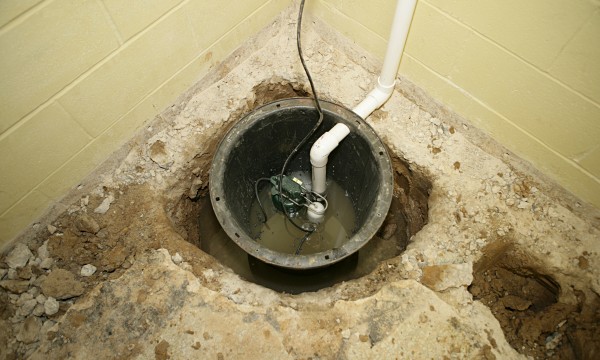It’s no fun finding water, especially a lot of water, in your basement. Flooding in the basement can be due to a number of issues and it's important to remember that a sump pump doesn’t solve the problem. A pump simply takes the water and puts it somewhere else.
However, if you've checked all the likely causes of why there is water in your basement or if your property is on a high water table and subject to flooding, the installation of a sump pump can certainly make life more pleasant. Follow these step-by-step instructions for choosing and installing a sump pump. [Photo Credit: istock.com/ftwitty]








